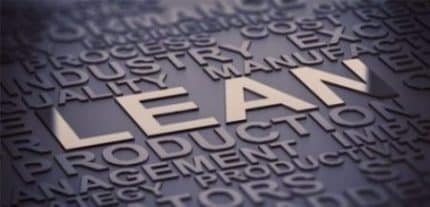Do you own a production company or intend to own one someday? Then, lean production is a factor you must consider for effective productivity. Every manager’s utmost desire is to minimize waste and make more profits. Hence this post is designed to help you actualize your production goal. In this article, therefore, you will discover what lean production is, its methods, and, of course, lean production’s advantages and disadvantages.
What is Lean Production
Lean production focuses on minimizing waste within manufacturing systems while maximizing productivity at the same time. To further define it. Lean production is a systematic manufacturing method used for eliminating waste within the manufacturing system. It takes into account the waste generated from uneven workloads and overburden and then reduces them to increase value and reduce costs. The word ”lean” in the term simply means no excess, so lean production can be translated simply into minimal waste manufacturing.
Waste is seen as anything that customers consider no value and are not willing to pay for. According to research conducted by the Lean Enterprise Research Centre (LERC), fully 60% of production activities in a typical manufacturing operation are waste they add no value at all for the customer. Some of the benefits of lean manufacturing can include reduced lead times, reduced operating costs and improved product quality.
OVERVIEW
Some well-known companies that use lean include Toyota, Intel, John Deere and Nike. The approach is based on the Toyota Production System and is still used by that company, as well as myriad others. Companies that use enterprise resource planning (ERP) can also benefit from using a lean production system. Lean production is one of the methods that focus on cutting out waste, whilst ensuring quality. This approach can be applied to all aspects of a business, from design, through production to distribution.
The goal is to cut out activities that do not add value to the production process, such as holding stock, repairing faulty products and unnecessary movement of people and products around the business. Lean production originated in the manufacturing plants of Japan but has now been adopted well beyond large and sophisticated manufacturing activities.
It was introduced to the Western world in the 1990 publication of “The Machine That Changed the World,” which was based on an MIT study into the future of the automobile and detailed Toyota’s lean production system. Since that time, lean principles have profoundly influenced manufacturing throughout the world, as well as industries outside of manufacturing, including healthcare, software development and service industries.
How Does Lean Manufacturing Work?
Eliminating waste as a means of continuously improving a process is the central tenet of lean manufacturing, which can be implemented in a variety of contexts. Lean manufacturing consistently provides value to the customer while simultaneously cutting down on waste and delivering process improvements.
The definition of waste encompasses any process, activity, product, or service that consumes resources like time, money, or expertise but does not add value for the consumer. These may include processes and procedures that are inefficient or wasteful, the talent that is not being fully utilized, or excess inventory.
The elimination of these inefficiencies ought to result in a simplification and streamlining of services, a reduction in costs, and, ultimately, cost savings for a particular product or service all the way through the supply chain to the end user.
The Eight Wastes of Lean Production
The Toyota Production System lays out seven wastes or processes and resources that don’t add value for the customer. These seven wastes are:
- Undue transportation
- Excess inventory
- The undue motion of people, equipment, or machinery
- Waiting, whether it is people waiting or idle equipment
- Over-production of a product
- Over-processing or putting more time into a product than a customer needs, such as designs that require high-tech machinery for unnecessary features; and
- Defects, which require effort and cost for corrections.
It was not originally included in the Toyota Production System, however, many lean practitioners point to an eighth waste as a waste of unused talent and ingenuity.
What is the Purpose of Lean Manufacturing?
The principles of lean manufacturing are used by manufacturers to reduce waste, enhance process efficiency, lower costs, and increase innovation in response to an unpredictable market. In the minds of a great number of people, the term “Lean manufacturing” is interchangeable with “waste elimination,” which is an accurate description of one of the most important aspects of any Lean practice.
What is a Good Example of Lean Production?
The practices described in the following examples are examples of Lean Manufacturing in action. Enhancing Production Capacity and Working Efforts in the Truck Manufacturing Industry Streamlining the work process by mapping the value stream is part of customer service’s efforts to streamline the process. Process Automation: Increasing Visibility While Also Allowing for Flow Tracking
What is Kaizen in Lean Manufacturing?
The term “Kaizen,” which refers to processes of rapid improvement, is frequently regarded as the “building block” of all lean production techniques. Eliminating waste, boosting productivity, and achieving sustained, continuous improvement in specific activities and procedures of an organization are the primary focuses of the Kaizen improvement methodology.
Is 5S Lean or Six Sigma?
Any kind of company can benefit from the use of Six Sigma’s many tools, which are designed to enhance both production and efficiency. Today, we are going to focus on the 5S tool, as well as the reasons why it is so essential. The 5S tool is an excellent system for dealing with the organization of a workplace.
Methods of Lean Production
With some great methods of lean production out there, how do you find the one that will have the most impact on your business? A good approach is to review the lean method that is currently proving itself where it matters most.
Below we share a brief description of 5 effective methods of lean production along with an explanation of how each tool can improve your production processes. Keep in mind, although each of these lean methods can have a dramatic impact on your business by itself, you can often multiply the benefits by combining them.
#1. Kaizen (Continuous Improvement)
Kaizen is a strategy where employees work together proactively to achieve regular, incremental improvements in the manufacturing process.
This strategy is effective because it focuses the collective talents and resources of your company on creating a culture continually on the lookout for ways to eliminate waste from manufacturing processes.
#2. 5S (The 5S System)
The 5S approach emphasizes the organization of your work area. This strategy involves removing what is not important. Once that’s done, then, you create a work area that shines. After that, you standardize each of the above elements of the process. Finally, you sustain the strategy by regularly applying the standards.
The 5S approach abolishes waste resulting from a poorly organized work area.
#3. Six Big Losses
Productivity inefficiency in virtually any manufacturing category can usually be traced back to 6 universally occurring loss categories.
The Six Big Losses include:
- Breakdowns
- Setup and Adjustments
- Small Stops
- Reduced Speed
- Startup Rejects
- Production Rejects.
The Six Big Losses approach gives you a guideline for attacking the most common causes of waste in manufacturing processes
#4. Overall Equipment Effectiveness (OEE)
OEE provides a framework for measuring productivity loss for a given manufacturing process. Three categories of loss are: downtime, slow cycles, and reject. More so, this lean method establishes a baseline and gives you the means to track progress in eliminating waste from a manufacturing process. Achieving 85% OEE is a reasonable target to shoot for in the beginning. Once you achieve, that you can focus on additional ways to elevate your results.
#5. Machine Monitoring
Machine monitoring software automatically collects data from machines and uses this data to provide real-time visualizations and notifications, as well as historical analytics to help operators and management make faster and more informed decisions.
In addition to providing you with at-a-glance performance on a machine-by-machine basis, machine monitoring gives you a window onto your entire manufacturing process.
If you are utilizing secure, cloud-based manufacturing software, it also puts information at your fingertips anywhere there’s an internet connection. this is one of the methods of lean production that is widely accepted.
The key to creating a truly lean manufacturing process is being receptive. You may find through experimentation that a combination of lean techniques delivers the optimal result.
Lean Production Advantages and Disadvantages
Before implementing lean manufacturing techniques within your production facility, it is important to analyze the advantages and disadvantages of the system.
Advantages of Lean Production
#1. Wast maximization
Lean manufacturing can efficiently minimize waste within a production facility. You can’t speak about the advantages of lean production without mentioning waste minimization, because, that is the most significant of all. “Waste” is defined as any activity that does not add value to the process. More so, waste areas include motion, inventory, waiting, overproduction, defects, transportation, and overprocessing. As companies sit on large amounts of inventory and waste, this process eliminates outdated or aged inventory. In addition, this process reduces the costs within the operation.
#2. Enhanced Customer Relationships
Lean focuses on loyal customers’ concerns and suggestions to cut some wasteful processes. Rather than focusing on the needs of all customers, companies can focus on their loyal customers to build strong and reliable relationships. This way, your customer interactions will improve and the relationships with your trusted customers will offer a steady flow of revenue coming in.
#3. Lean Infrastructure
A lean infrastructure means that you are only dealing with a few components: building, tools, supplies, equipment, and labour to fulfil near-term inventory demand. Thus, the facility does not waste space within the operation and enables the facility to come as close as it can to production efficiency.
Disadvantages of Lean Production
Having looked at the advantages, in this section, we shall consider some disadvantages of lean production.
#1. Equipment Failure
Lean has very little room for error. Equipment or labor failure can lead to major inconsistencies and can make the entire operation fall behind. In other mass production facilities, employees could move from one machine to another in the event of a breakdown. In addition, the breakdown of a machine must be fixed immediately as there are usually no alternative resources that can do the work. This is why it is important to stay on top of all machine maintenance and inspections.
#2. Delivery Inconsistencies
In correlation with equipment failure, lean manufacturing can lead to delivery inconsistencies. Furthermore, using lean techniques means that you have a smaller error margin. If your supply deliveries are late, you may not have enough raw materials to meet your customers’ demands, leading to late deliveries. Hence, this disadvantage can hinder customer relationships, push customers toward your competitors, and cost you revenue. Actually, you can’t talk about the disadvantages of lean production without emphasis on this.
#3. Employee Dissatisfaction
As one of the major disadvantages, adopting a lean production method requires change among employees to be more efficient to ensure that quality products are being made. This can be risky and disadvantageous if employees reject the new methods. Having good managers that can help support and persuade the change from one technique to another can be helpful.
What are the Five Stages of the 5S Process?
A clean, well-ordered, and disciplined work Environment is possible for organizations to establish if they use the lean 5S system, which consists of sorting, setting in order, shining, standardizing, and maintaining. Many businesses only carry out the first three steps, in the vain hope that the remaining two will fall into place on their own.
What Are Lean Manufacturing Techniques?
Lean manufacturing strategies allow you to provide higher-quality products at much cheaper prices. That’s something to get pumped up about!
Finding credible and well-written material about industrial improvement approaches can be tough. As a result, our mission is to present you with the most up-to-date, easy-to-understand information to assist you in increasing the efficiency, effectiveness, and profitability of your manufacturing processes.
With this in mind, each lean production topic on this site has been to be self-contain and stand-alone. Simply go ahead and read about a topic if you want to learn more about it. We’ve worked hard to make it as simple as possible for you to research the issues that are most relevant to your circumstance.
FAQ
What are lean tools?
What Are Lean Tools? The Japanese word for waste is Muda, which is defined as “uselessness. Furthermore, Lean tools are designed to reduce Muda in organizations and improve quality control. In other words, Lean tools seek to eliminate processes that aren’t valuable.
What are the 5 principles of lean?
According to Womack and Jones, there are five key lean principles: value, value stream, flow, pull, and perfection.
When should I use lean thinking?
Lean thinking at the senior level creates leaner enterprises because sales increase through customer satisfaction. With higher quality products or services because cash improves as flexibility reduces the need for inventories or backlogs.






